New Jersey is known for historic buildings, ferry rides, and 130 miles of Atlantic Coast. The state boasts diverse ecosystems, such as coastal marines, pine forests, and marshes, allowing many animal species to thrive. Creatures of land, air, and sea call the garden state home, including some of the fastest animals on earth. The peregrine falcon is the speediest species in this region, reaching 240 miles per hour as it nose-dives for prey. However, it is the fastest animal in the world and is automatically number one in every state. It is not included in the list due to redundancy. But you can discover the other fastest animals in New Jersey, including where they live and why they are so swift.
Also, check out this article: 10 Incredible Peregrine Falcon Facts to learn more about the world’s fastest animal!
Bald Eagle
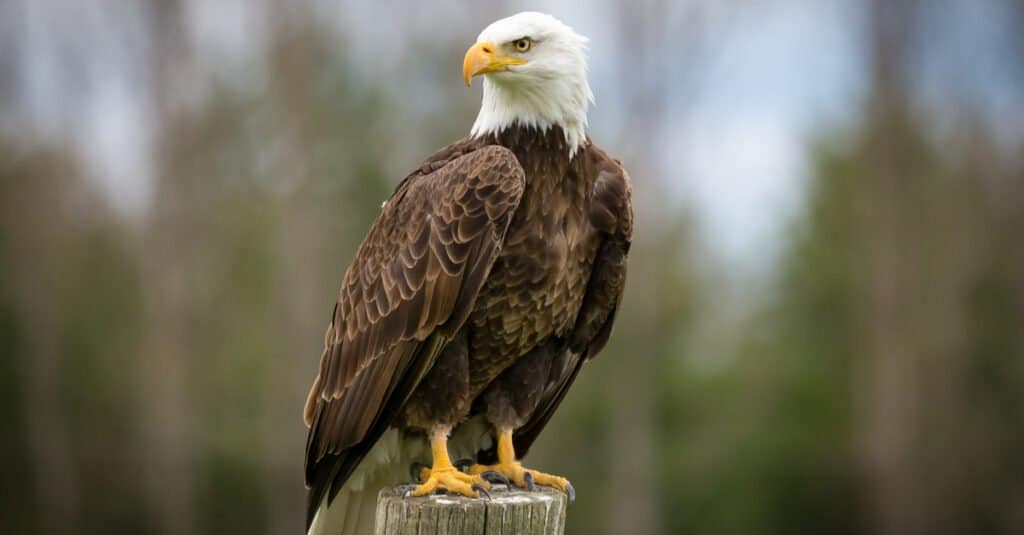
Bald eagles are large flying birds and fierce predators.
©iStock.com/emranashraf
The bald eagle is a large bird of prey native to North America. They live year-round in every county in New Jersey, inhabiting areas near lakes, reservoirs, rivers, and bays. When diving for prey, these eagles can reach incredible speeds of over 100 miles per hour. These birds are powerful fliers and use thermal convection currents to soar; their average rate is between 35 and 40 mph when gliding and flapping. They also take advantage of the wind, keeping it to their back and angling their heads, wings, and tails for maximum speed.
Horse
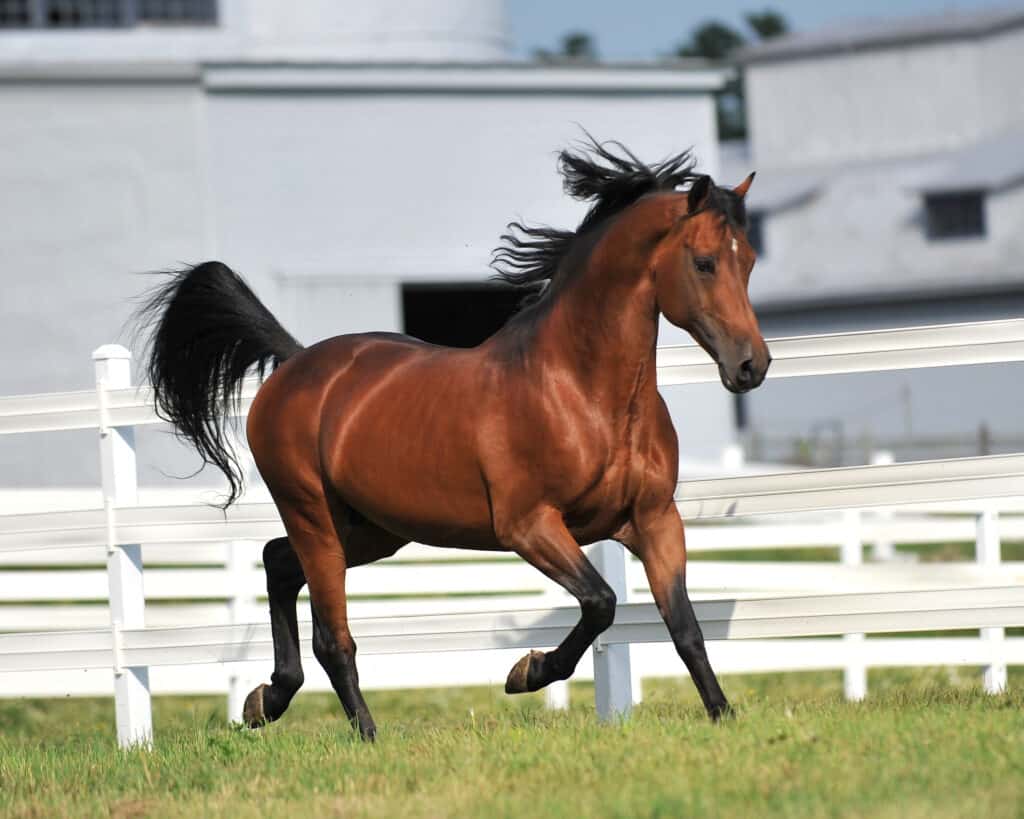
Thoroughbreds have larger-than-average hearts and good vascularization, which gives them endurance and explosive power.
©Christopher Crosby Morris/Shutterstock.com
The horse is New Jersey’s state animal, with over 40,000 living on roughly 96,000 equine acres across the state. Most horses are domesticated, but you can also find wild breeds living in sanctuaries. Most horses can gallop around 30 miles per hour, but sprinters bred for racing can get up to 55 mph. Quarter horses, in particular, can run over 400 yards at this max rate. Thoroughbreds have larger-than-average hearts and good vascularization, which gives them endurance and explosive power. Horses can outrun most living creatures, including humans.
Osprey
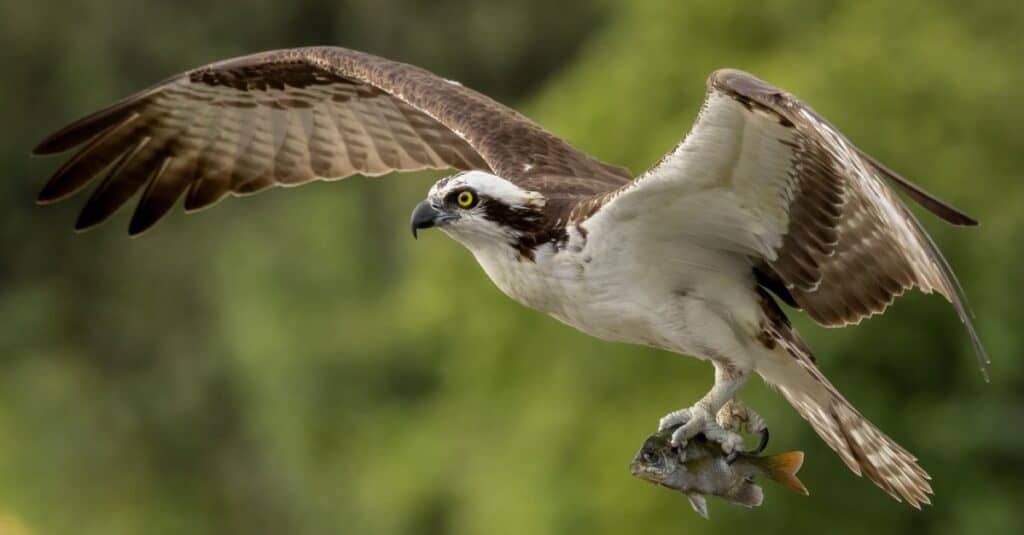
A number of birds have evolved specialized traits to help them hunt for fish.
©iStock.com/Harry Collins
The osprey, or sea hawk, is a significantly-sized bird of prey native to North and South America. They are one of New Jersey’s largest raptors and live along the state’s coastal marshes. These extensive travelers are strong, powerful fliers, averaging 30 miles per hour at normal cruising speed. However, they can get up to 50 miles per hour as they dive into the water for food. These birds are distinctly shaped with long, narrow wings that help them achieve these impressive speeds. Well, that and gravity.
Eastern Goldfinch
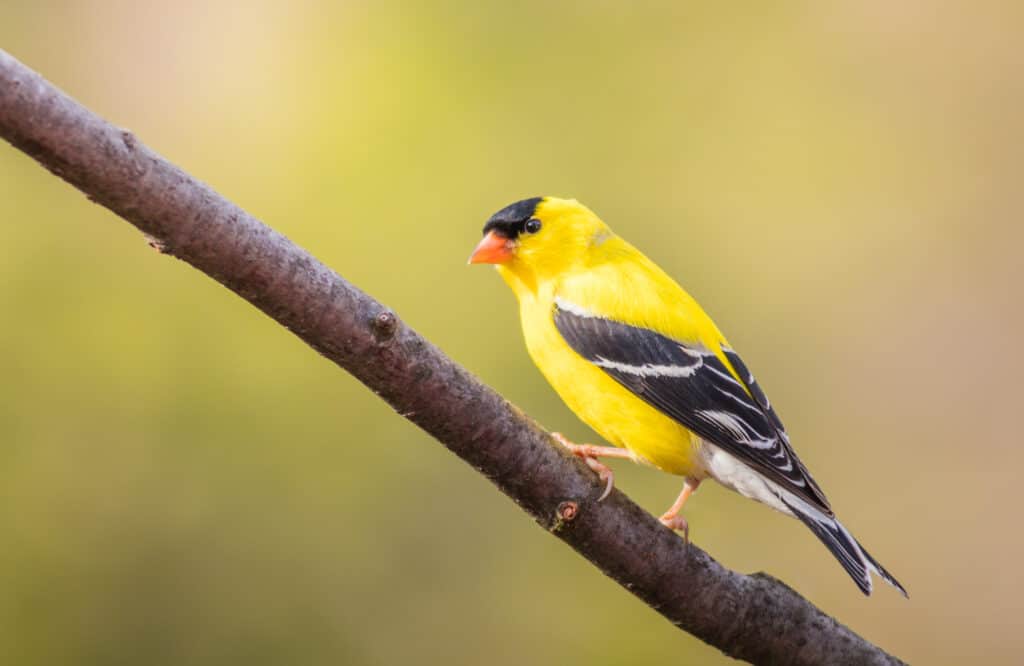
Goldfinch are excellent fliers with an undulating pattern, dipping and rising like a wave.
©Rabbitti/Shutterstock.com
The eastern goldfinch, also known as the American goldfinch, is a small passerine bird native to North America. It breeds primarily in the eastern half of the United States and Canada and is the state bird of New Jersey! These vibrantly-colored birds live year-round in the state and inhabit shrub thickets and hedgerows near meadows. The goldfinch is one of the fastest swallows, flying up to 47 miles per hour. They can cover an extensive area in a short amount of time during migration or when searching for food. They are excellent fliers with an undulating pattern, dipping and rising like a wave.
Skipper Butterfly
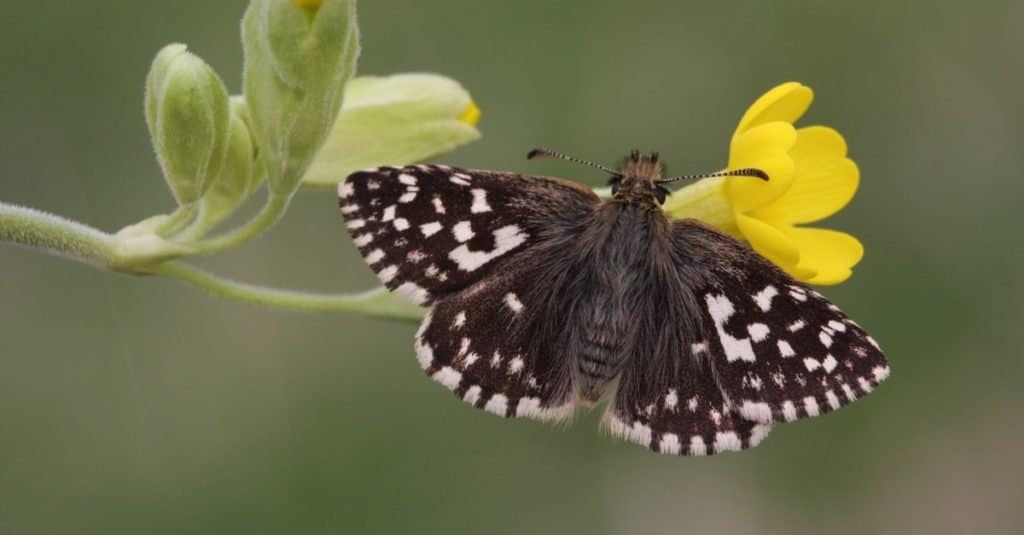
Skippers are the fastest butterflies in the world and can fly at a max speed of 37 miles per hour.
©Sandra Standbridge/Shutterstock.com
Skippers are a family of butterflies native to North America. Multiple species of these high summer insects are found throughout New Jersey, with the largest concentration visible from late June to early August. Skippers are the fastest butterflies in the world and can fly at a max speed of 37 miles per hour. To compare, the average butterfly can fly no faster than five to 12 mph. Skipper butterflies are sprinters and have some of the fastest reflexes in nature, twice as fast as the startle reflexes in humans. They have strong bodies and short wings designed for quick take-offs, long-distance flights, and increased maneuverability.
Gull
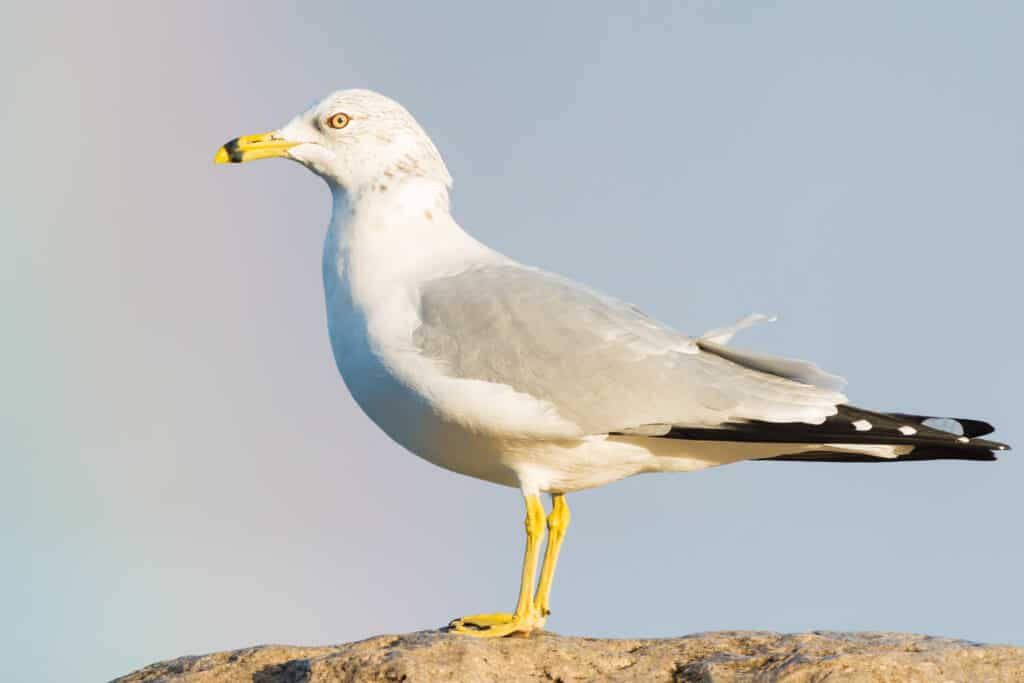
Gulls can travel over 100 miles daily but conserve energy by gliding through the air current.
©iStock.com/PaulReevesPhotography
Gulls, most commonly known as seagulls, are seabirds found worldwide. New Jersey has several species found along its 130 miles of Atlantic Coast, but you may also see them further inland throughout the state. Seagulls are exceptional fliers who can travel long distances, hover over the sea for hours searching for food, and fly up to 28 miles per hour. They can travel over 100 miles daily but conserve energy by gliding through the air current.
Honey Bee

Honeybees can achieve impressive speeds, reaching 15 miles per hour on average.
©Dmitri Gomon/Shutterstock.com
Honeybees are flying insects native to Afro-Eurasia and were introduced to North America as crop pollinators, where they still reside in New Jersey. They are invaluable to the state’s fruit and vegetable production. So it’s a good thing they have 20,000 bee colonies. These tiny creatures can achieve impressive speeds, reaching 15 miles per hour on average. When not carrying nectar, pollen, or water, honeybees can get up to 20 mph. Technically, a human can outrun a bee, but you’d have to run very fast!
Up Next:
- Discover the Fastest Animals in Florida
- Discover the Fastest Animals in Tennessee
- Discover the Fastest Animals in New York
- The Top 10 Fastest Sea Animals
The photo featured at the top of this post is © Lukas Pavlacik/Shutterstock.com
Thank you for reading! Have some feedback for us? Contact the AZ Animals editorial team.






